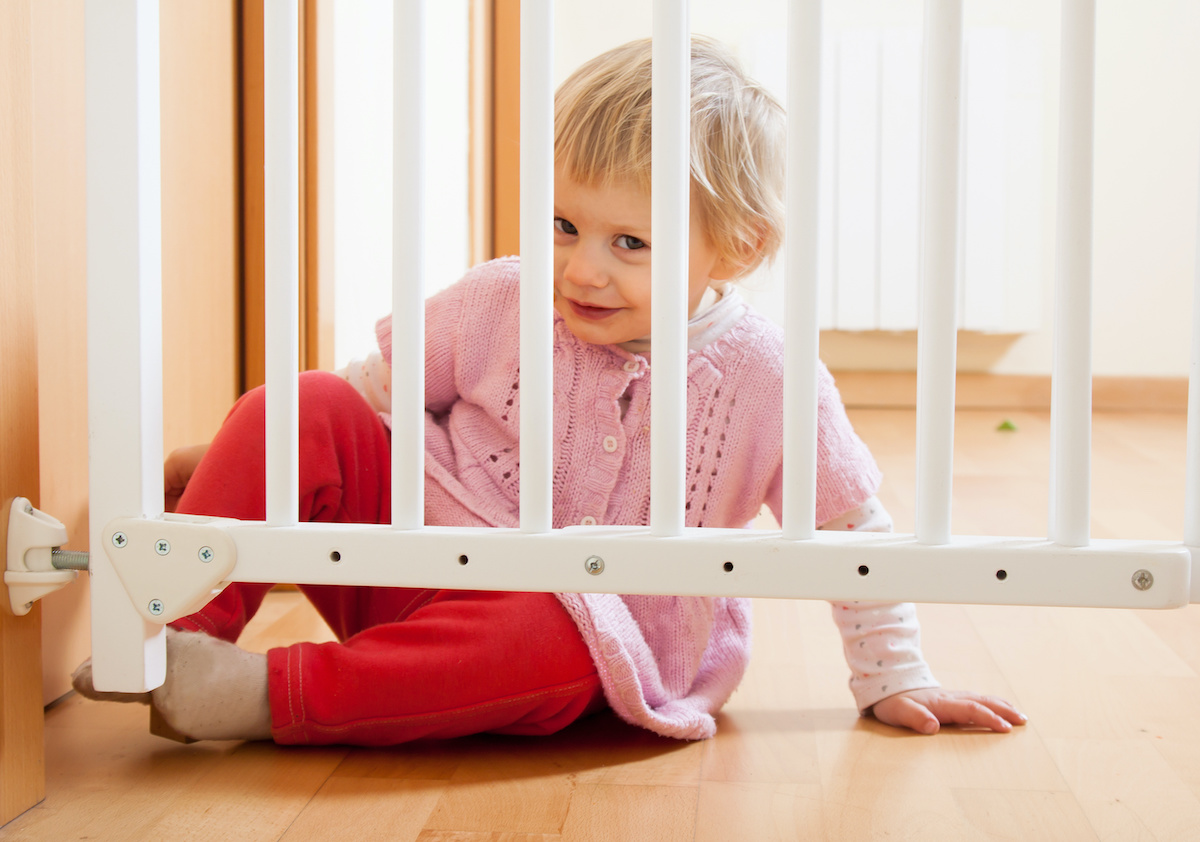Before you bring your baby home from the hospital, you need to make sure that your home is a safe place for them. Some baby proofing should be done immediately, but some things can be put off until later when crawling and walking are imminent. If you’re not sure where to start, here are 15 tips for how to babyproof your home:
1. Prepare the Nursery
This one may seem like a no-brainer, but it’s worth mentioning for a couple of reasons. You should have this done as far in advance of your due date as possible and not be put off until the last minute.
2. Install Safety Devices
Another important step for baby proofing your home can be to install safety devices. If it’s possible, consider a home security system that includes smoke and carbon monoxide detectors along with a burglar alarm.
At a minimum, you should have the following items in your home. Take the time to ensure proper installation and learn how to use them so you are prepared in the event of an emergency.
- Fire extinguishers
- Smoke detectors on every level of your home and in hallways outside bedrooms
- A UL-Listed carbon monoxide detector on each story – this is most important if you use gas or oil appliances or have an attached garage
- First aid kit – not so much of an installation, but you should have it ready and stocked at all times and keep it in the same easily accessible place at all times
3. Make Dangerous Items Inaccessible
Another important thing to make sure you do before you have a mobile baby in the house is to remove certain items and substances from places that may be easily accessed or in reach of the child. The American Academy of Pediatrics has tips on what to remove or store in a secure place:
- All-purpose, kitchen, and bathroom cleaners
- Bleach
- Detergent (dishwashing & clothing)
- Nail polish remover
- Cosmetics
- Perfume
- Mouthwash
- All medication (over the counter and prescription)
- Alcoholic beverages
- Items from the garage or basement like weed killer, fertilizer, insecticides, gasoline, antifreeze, kerosene, or pool chemicals
- House plants that may have toxic or poisonous properties
- Pet supplies
4. Secure Furniture and Fixtures
The furniture in your home, especially pieces that will be used frequently by the baby or child, should be checked to ensure safety. Make sure things are correctly put together, mattresses fit in cribs and beds safely, and any paint or coating on the furniture is safe.
Any furniture that could possibly be pulled down on top of a child should be anchored to the wall. Also, make sure any wall hangings, picture frames, art, or shelving is secure so they won’t fall down if the wall is hit by something like a speeding toddler.
5. Eliminate Choking Hazards
Make sure you keep small objects that children can choke on out of their reach. Babies and small children will put anything in their mouths, so if it’s small enough to swallow and isn’t food you’ve given them, then store it somewhere they can’t get to it. This includes leaving things like buttons, beads, jewelry, and coins lying within reach. If an item can fit through an empty toilet paper or paper towel tube, it is a potential choking hazard.
6. Store Valuables and Breakables
Removing breakable and valuable items will keep your child safe and prevent you from losing a family heirloom or valued item. You might be sad that they’re not on display, but you can pull them back out when the kids are older.
7. Restrict Access to the Stairs
Even when a child is steady on their feet, you don’t want them to have free access to the stairs at all times. Put gates at the top and bottom of stairways. And if you have an attic or basement stairwell, make sure babies and small children do not have access to them.
8. Block Electrical Outlets and Secure Cords and Wires
Make sure all open electrical outlets have safety plugs if they are not covered by furniture. Keep the floor as clear of electrical cords and wires as possible. There will inevitably be a cord that you need somewhere that might be accessible to the baby, but there are products and methods to organize, conceal, and secure cords to keep children from interfering with them.
9. Inspect Door Latches and Locks
Ensure that all doors in the house close and latch properly. If they don’t, repair them or purchase latches that can prevent children from opening them. Make sure your drawers and cabinets all have childproof latches on them.
11. Cover Sharp Edges
Cover sharp corners with safety padding or bumpers. It’s almost a guarantee that toddlers and even older kids will bump into things and tumble sometimes. Covering dangerous corners that can cause damage when hit can prevent more serious injuries when these accidents happen.
12. Give the Bathroom a Once-Over
The bathtub can be a place where you and your child have some fun playtime. However, you also need to ensure it’s safe. Put a non-slip mat in the bathtub and non-skid mats on the floor to prevent slipping.
Turn down your water heater’s temperature to below 120 degrees Fahrenheit to avoid burning or scalding. An accurate and reliable water thermometer is also important and many are available. Also, never under any circumstances leave a baby unattended in the tub as drowning can occur in as little as an inch of water.
Contact Wake Forest Pediatrics
The board-certified pediatricians and staff at Wake Forest Pediatrics are dedicated to providing quality care to patients in Wake Forest and Knightdale. If you have questions about safety issues like properly babyproofing your house, call our Wake Forest office at 919-556-4779 or our Knightdale office at 919-266-5059 to make an appointment.




